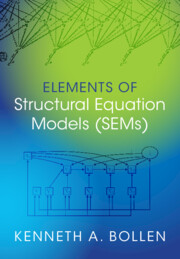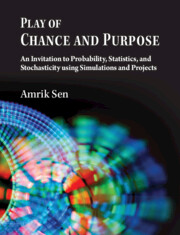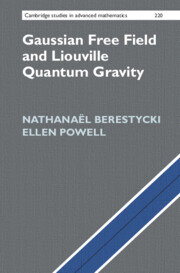Refine search
Actions for selected content:
52341 results in Statistics and Probability
Inference in Statistical Modelling and Machine Learning
- A Concise Introduction
- Coming soon
-
- Expected online publication date:
- June 2026
- Print publication:
- 31 May 2026
-
- Book
- Export citation
Financial Enterprise Risk Management
- Coming soon
-
- Expected online publication date:
- May 2026
- Print publication:
- 31 May 2026
-
- Book
- Export citation
All of Regression
- Coming soon
-
- Expected online publication date:
- May 2026
- Print publication:
- 31 May 2026
-
- Book
- Export citation
Cause and Correlation in Biology
- A User's Guide to Path Analysis, Structural Equations and Causal Inference with R
- Coming soon
-
- Expected online publication date:
- May 2026
- Print publication:
- 31 May 2026
-
- Book
- Export citation
Markov Decision Processes and Reinforcement Learning
- Coming soon
-
- Expected online publication date:
- April 2026
- Print publication:
- 30 April 2026
-
- Book
- Export citation
Bias!
- How Systemic Error Threatens Biomedical Research
- Coming soon
-
- Expected online publication date:
- March 2026
- Print publication:
- 31 March 2026
-
- Book
- Export citation

A Practical Guide to Time Series Analysis
- Coming soon
-
- Expected online publication date:
- March 2026
- Print publication:
- 31 March 2026
-
- Book
- Export citation

Networks
- Probability and Statistics
- Coming soon
-
- Expected online publication date:
- March 2026
- Print publication:
- 31 March 2026
-
- Book
- Export citation

High-Dimensional Probability
- An Introduction with Applications in Data Science
- Coming soon
-
- Expected online publication date:
- March 2026
- Print publication:
- 31 March 2026
-
- Book
- Export citation

Risk Measures
- An Introduction to the Mathematical Theory
- Coming soon
-
- Expected online publication date:
- February 2026
- Print publication:
- 28 February 2026
-
- Book
- Export citation

Elements of Structural Equation Models (SEMs)
- Coming soon
-
- Expected online publication date:
- December 2025
- Print publication:
- 31 December 2025
-
- Book
- Export citation

Play of Chance and Purpose
- An Invitation to Probability, Statistics, and Stochasticity Using Simulations and Projects
- Coming soon
-
- Expected online publication date:
- November 2025
- Print publication:
- 30 November 2025
-
- Textbook
- Export citation

Statistics for Chemical Engineers
- From Data to Models to Decisions
- Coming soon
-
- Expected online publication date:
- November 2025
- Print publication:
- 25 September 2025
-
- Textbook
- Export citation

Gaussian Free Field and Liouville Quantum Gravity
- Coming soon
-
- Expected online publication date:
- November 2025
- Print publication:
- 04 December 2025
-
- Book
- Export citation
A rainbow Dirac theorem for loose Hamilton cycles in hypergraphs
- Part of
-
- Journal:
- Combinatorics, Probability and Computing , First View
- Published online by Cambridge University Press:
- 11 November 2025, pp. 1-29
-
- Article
- Export citation
Anatomy of elite and mass polarization in social networks
- Part of
-
- Journal:
- Network Science / Volume 13 / 2025
- Published online by Cambridge University Press:
- 10 November 2025, e18
-
- Article
-
- You have access
- Open access
- HTML
- Export citation
Claims inflation estimation: a practical guide for historical data
-
- Journal:
- British Actuarial Journal / Volume 30 / 2025
- Published online by Cambridge University Press:
- 10 November 2025, e31
-
- Article
-
- You have access
- Open access
- HTML
- Export citation
Modeling the Influences of Climate Conditions on Measles Transmission in China – ERRATUM
-
- Journal:
- Epidemiology & Infection / Volume 153 / 2025
- Published online by Cambridge University Press:
- 07 November 2025, e128
-
- Article
-
- You have access
- Open access
- HTML
- Export citation
On approximating the Potts model with contracting Glauber dynamics
- Part of
-
- Journal:
- Advances in Applied Probability , First View
- Published online by Cambridge University Press:
- 07 November 2025, pp. 1-38
-
- Article
-
- You have access
- Open access
- HTML
- Export citation
(Empirical) Gramian-based dimension reduction for stochastic differential equations driven by fractional Brownian motion
- Part of
-
- Journal:
- Journal of Applied Probability , First View
- Published online by Cambridge University Press:
- 07 November 2025, pp. 1-32
-
- Article
-
- You have access
- Open access
- HTML
- Export citation










